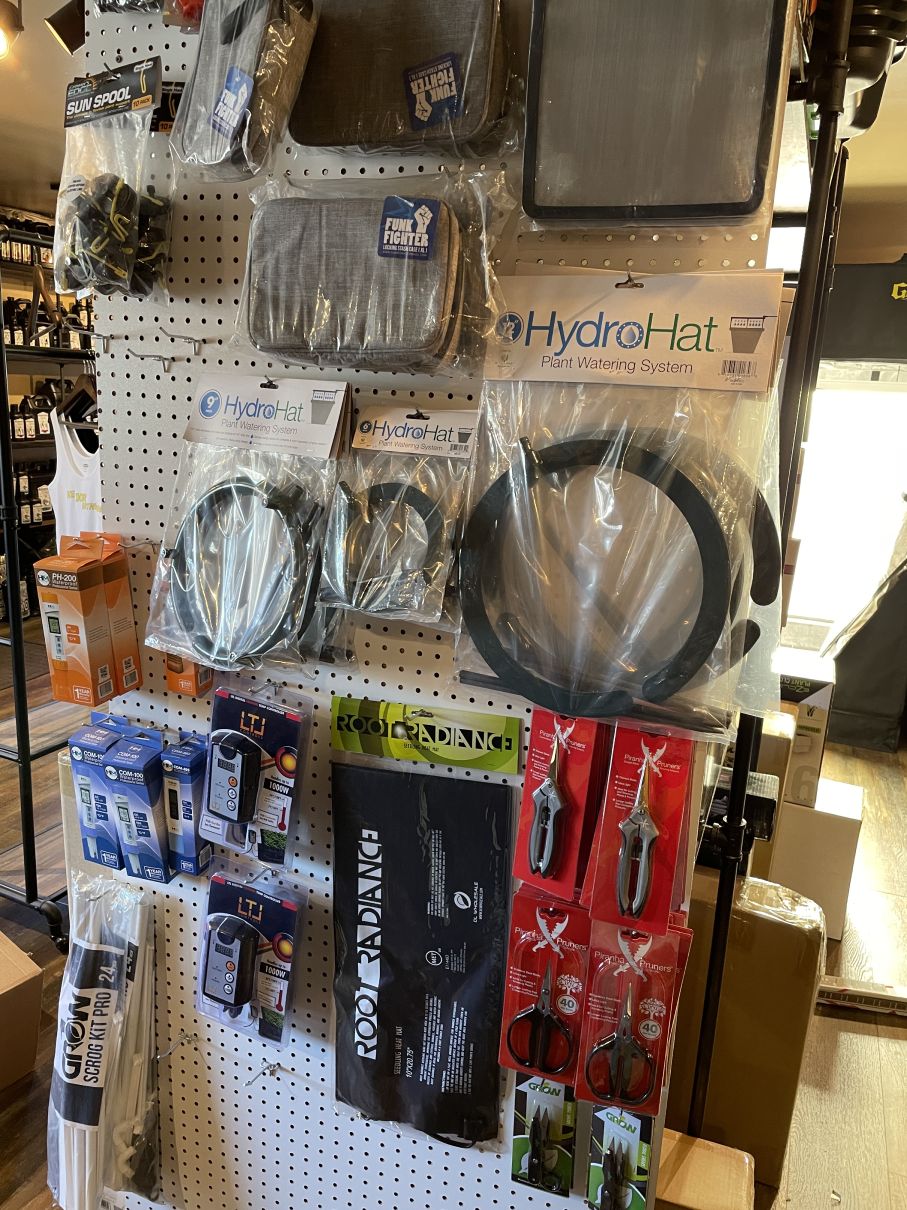The Indoor Earthworm: A One-of-a-kind Enhancement to Your Indoor Ecosystem
The Indoor Earthworm: A One-of-a-kind Enhancement to Your Indoor Ecosystem
Blog Article
The Ultimate Guide to Hydroponic Equipments and Techniques
In the globe of modern-day farming, hydroponic systems have arised as a cutting-edge technique for growing plants without dirt. As we uncover the ins and outs of hydroponics in this detailed overview, we will navigate with the numerous kinds of systems, explore the important nutrients vital for plant growth, and dig right into innovative techniques that can considerably boost yields.
Benefits of Hydroponic Equipments
Hydroponic systems use a multitude of benefits, including effective resource use and specific nutrient shipment to plants. By supplying a regulated setting for plant development, hydroponic systems make it possible for optimum water and nutrient usage, resulting in higher yields compared to conventional soil-based growing. This effectiveness not only preserves sources however likewise minimizes waste, making hydroponic systems eco-friendly.
Moreover, the accurate delivery of nutrients in hydroponic systems enables customization based on the specific demands of each plant variety. This targeted approach ensures that plants receive the appropriate equilibrium of crucial nutrients, advertising healthier growth and reducing the danger of nutrient deficiencies or imbalances. In addition, the ability to change and keep track of nutrient degrees in real-time maximizes plant performance and general plant high quality.
Furthermore, hydroponic systems get rid of the need for herbicides and chemicals, as the closed-loop system minimizes the danger of insects and diseases that are commonly located in soil-based farming - The Indoor Earthworm. This not just profits the plants and the environment yet also adds to generating cleaner, healthier plants for intake
Types of Hydroponic Setups

Nutrient Film Strategy (NFT) makes use of a shallow stream of nutrient solution moving over the plant roots, providing a constant supply of nutrients. Trickle systems include dripping a nutrient remedy onto the plant origins, providing exact control over feeding.
Each kind of hydroponic setup has its benefits and is fit to different plant varieties and development phases. Recognizing the unique features of these systems can aid hydroponic growers pick the most appropriate configuration for their details demands and preferences.
Important Nutrients for Hydroponics
In hydroponic systems, plants rely upon a specific equilibrium of vital nutrients to thrive and expand efficiently. These necessary nutrients are important for numerous plant functions such as photosynthesis, origin development, and total growth. The main macronutrients called for by plants in hydroponic systems are phosphorus, potassium, and nitrogen. Nitrogen is necessary for leafy environment-friendly growth, phosphorus aids in origin development and flower/fruit production, while potassium helps in total plant health and wellness and condition resistance.
In enhancement to read this macronutrients, plants additionally need secondary nutrients like magnesium, sulfur, and calcium, along with micronutrients such as iron, copper, zinc, and manganese (The Indoor Earthworm). These nutrients are vital for making sure that plants have all the essential foundation to perform necessary organic procedures

Advanced Techniques for Optimum Return
To accomplish optimum yields in hydroponic systems, cultivators can carry out innovative techniques that enhance plant growth and efficiency. One such technique is the usage of supplementary lighting. By offering man-made lights such as LED or high-pressure salt lights, farmers can prolong the variety of light hours plants obtain daily, advertising faster development and raised returns. Another sophisticated strategy is the execution of carbon dioxide supplements. Raising the degrees of co2 in the expanding setting can boost photosynthesis and increase plant development dramatically. In addition, using strategies like plant training and pruning can assist enhance why not try here light distribution and air flow, making certain that all components of the plant obtain ample light and nutrients. Moreover, using automated systems for nutrient distribution and monitoring can help keep optimum nutrient degrees, decreasing the risk of shortages or inequalities that can hinder plant growth. By incorporating these innovative strategies right into their hydroponic systems, farmers can optimize yields and accomplish abundant harvests.
Troubleshooting Common Hydroponic Issues
When confronted with difficulties in hydroponic systems, cultivators typically encounter typical problems that can impede plant growth and efficiency. One prevalent issue is vitamins and mineral shortages, where plants lack crucial elements for healthy and balanced advancement. To fight this, regular monitoring of nutrient degrees and changing the nutrient option accordingly is vital. One more common issue is pH imbalance, which can result in nutrient lockout and inadequate absorption. Preserving the proper pH variety certain to the plant being expanded is vital for optimal nutrient uptake. In addition, insufficient oxygen degrees in the root area can lead to root rot and stunted growth. Making sure proper oygenation and oxygenation of the nutrient service can assist stop this trouble. Insect problems, such as aphids or crawler termites, can additionally afflict hydroponic systems. Carrying out incorporated insect monitoring methods and frequently examining plants can aid regulate and stop invasions. By promptly recognizing and attending to these typical hydroponic issues, cultivators can keep healthy plants and take full advantage of yields in their hydroponic systems.
Conclusion
In conclusion, hydroponic systems provide numerous benefits for growing plants effectively. With cautious planning and focus to detail, hydroponic he said systems can transform the means plants are cultivated, leading to more sustainable and effective agricultural methods.
By providing a controlled setting for plant growth, hydroponic systems allow ideal water and nutrient use, leading to higher returns compared to traditional soil-based cultivation. The Indoor Earthworm. Nutrient Film Method (NFT) utilizes a shallow stream of nutrient option flowing over the plant origins, offering a constant supply of nutrients. Tracking and changing nutrient levels based on plant growth phases is important to preventing vitamins and mineral deficiencies or poisonings and optimizing plant performance in hydroponic systems
Furthermore, employing strategies like plant training and trimming can assist maximize light circulation and air movement, making sure that all parts of the plant receive ample light and nutrients. Making use of automated systems for nutrient shipment and monitoring can assist keep ideal nutrient degrees, decreasing the risk of deficiencies or imbalances that can prevent plant growth.
Report this page